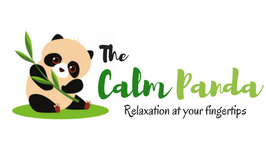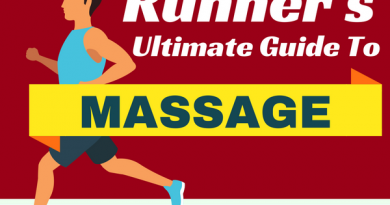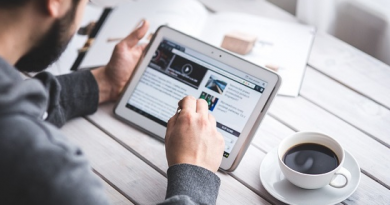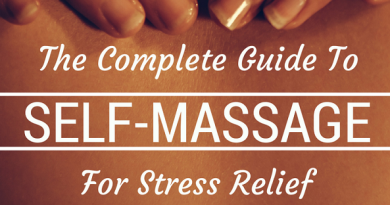How To Get Rid Of Lower Back Pain Naturally: 8 Effective Remedies, Backed By Science
I used to brush lower back pain off as something only older folks experience. My mom always complains about it and I remember thinking she’s just exaggerating and only tricking me into massaging her.
And then it was my turn to get older.
After working in the hospital as a nurse and spending another couple of years as a freelance writer, my lower back started hurting like hell. Worse, I’m only in my late twenties.
A few episodes of low back pain every once in a while are innocuous in my book. But not when it results in sick leaves and several unfinished projects.
The figures don’t lie:
⊕Approximately one-quarter of American adults reported having experienced lower back pain for at least 1 day in the past 3 months.
⊕An estimated $100 billion was spent or wasted in 2006 due to low back pain, two-thirds of which were income losses of individuals whose back pain drastically reduced their productivity.
⊕According to a special report by Harvard, 4 in 5 Americans, involving both male and female, will be affected by back pain at some point in their lives.
⊕Low back pain is the second leading cause of disability in the US, and the fourth worldwide.
Episodes of lower back pain can be as short as a week (acute) or as long as 12 weeks or more (chronic). Whatever the case, we all want instant relief from our aching backs.
More often than not, this ‘instant’ relief comes in the form of a “magic pill”–medications like opioids prescribed by doctors that promise immediate effects.
Based on my 61-year-old mother’s experience, however, painkillers–whether prescribed or over-the-counter–aren’t effective as far as long-term recovery is concerned. Worse, some of these drugs have alarming side-effects.
Turns out, latest scientific research only substantiates my fears.
In early 2017, the American College of Physicians (ACP) released a new and revised set of guidelines on how doctors should deal with patients suffering from back pain. After sifting through and analyzing a mammoth list of research studies, the ACP now recommends non-pharmacologic methods as first-line therapies in treating lower back pain.
This in-depth guide will discuss each of these noninvasive strategies in detail. We’ve only chosen methods that are both safe and can easily be done at home on your own. Take note, however, that there’s no single cure for lower back pain and each case is different from another.
If you believe your case is unique, talk to your physician and discuss whether your condition will benefit from the strategies in this article or from more advanced therapies like medications and surgery.
Why does my back hurt?
According to Dr. Monique Tello of Harvard Health Publications, 85% of back pain cases are “harmless” and usually subside without medical intervention. She calls them “mechanical back pain” or those which last anywhere between 1 and 12 weeks.
Several factors could lead to the development of “mechanical” back pain. One of them is aging: the older you get, the weaker the bones and joints in your lower back become.
Most of the time, however, acute cases of back pain are caused by accidents, overuse, or excessive lifting–all of which put a strain on your lower back muscles.
The link between heavy lifting and back pain is corroborated by a study in Arthritis Care and Research. After interviewing 1,000 patients in Australia who went to 300 different clinics to find low back pain relief, researchers found out that majority of them carried heavy loads or lifted objects in awkward positions prior to experiencing back pain.
People with a mild case of back pain usually recover with or without medications. If the pain continues after 3 to 4 days, it’s time to see your doctor.
One possible culprit behind chronic back pain is herniated disc which happens when a bulging disc compresses the nerve/s branching off the spinal cord. Other serious conditions that cause lower back pain include spondylolisthesis or slipped disc; spinal stenosis which occurs when part of the spinal cord is squeezed due to arthritis; and compression fracture, a complication of osteoporosis.

In these serious medical conditions, low back pain is usually accompanied by other alarming symptoms. According to Robert Shmerling of Beth Israel Deaconess Medical Center, consult your physician immediately if, in addition to persistent lower back pain, you’re also experiencing sudden weight loss, fever, and neurological symptoms like weakness, numbness, and incontinence.
Lower Left Back Pain.
If you’re feeling a sharp, stabbing, dull pain on the lower left of your back, it may be an indication of muscle/ligament strain; damage to any of the structures surrounding the spine; a problem in the kidneys or other internal organs; or other serious conditions like fibromyalgia and ankylosing spondylitis.
As with generalized low back pain, please consult a physician immediately if the pain is accompanied by other unusual symptoms or if it becomes too severe that you can no longer perform daily activities.
Lower Right Back Pain.
What causes pain on your lower left back can also lead to lower right back pain. These include injuries in tissues surrounding the spine or internal organs located in the mid-back, abdominal, and pelvic regions.
Meanwhile, immediate medical attention is needed if the lower right back pain occurs simultaneously with a sharp pain in the lower right side of the abdomen–a possible indication of an inflamed or ruptured appendix.
How To Get Rid Of Lower Back Pain: Natural Remedies Backed By Science.
On April 4, 2017, a surprising new set of recommendations for physicians was published in the Annals of Internal Medicine.
These guidelines, released by the American College of Physicians (ACP), intend to replace opioids and over-the-counter painkillers with non-pharmacologic methods as first-line therapies in treating back pain.
The change is the culmination of years of research which all pointed to one thing: Opioids are barely effective and often lead to addiction and overdose. As a result, physicians are advised to shy away from prescribing drugs as initial treatment for back pain.
Instead, the group recommends what used to be considered “non-traditional” methods which are not only safe but also scientifically-proven effective. Let’s discuss these noninvasive treatments one by one:
Heat Therapy.
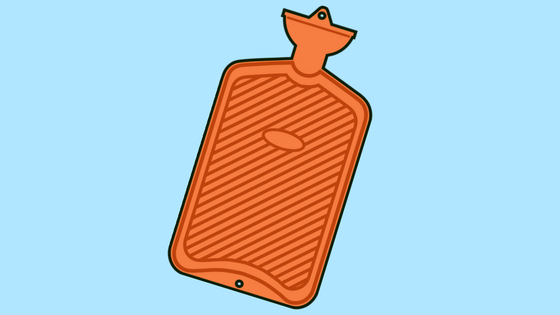
Effective for: Acute (lasting up to 4 weeks) and subacute (lasting from 4 to 12 weeks) back pain.
Overview: According to the ACP guidelines, heat wrap is most effective in relieving pain and preventing disability when used for at least 4-5 days following an injury. The studies also found out that a combination of exercise and heat therapy is significantly more effective in managing acute back pain compared to doing exercises alone.
Interestingly, cold therapy is also a recommended home remedy for back pain. And there’s the rub: How will you know if you should use ice or heat for back pain?
Cold application is best used within 24 to 72 hours following a back injury. This injury is usually a muscle strain that is either sports-related or a result of lifting heavy objects. Cold therapy in the form of a frozen bag of peas or frozen gel packs helps in minimizing pain, reducing inflammation, and preventing further tissue damage.
To avoid aggravating the injury, place a cloth between the skin and the cold application. You can apply cold therapy 8 to 10 times a day, but not more than 20 minutes at a time.
Once enough time has elapsed and the inflammation has subsided, you can then proceed to heat therapy. The warm temperature stimulates blood flow, speeding up the transport of oxygen-rich blood and nutrients necessary for muscle recovery.
Note that the cold-before-heat therapy is only applicable to lower back pain that resulted from injuries like whiplash and damaged tissues due to lifting heavy objects.
Approximately 85% of back pain cases, however, are “idiopathic” or have unknown causes. They’re most likely caused by trigger points or “muscle knots,” in which case heat therapy is more beneficial.
How To Do It:
⊕Heat therapy comes in two forms: dry heat, examples of which are electric heating pads, heat wraps, or as simple as hot water bottle; and moist heat, an expensive but more effective type of heat therapy you can get from hot baths or saunas.
⊕The type and duration of heat therapy depend on the extent of the lower back pain. While minor back tension may only need 15 to 20 minutes of heat, back pain caused by serious injuries may require 30 minutes up to 2 hours or more of heat application.
⊕Hot water bottles and heat wraps are good for short-term heat therapy, while heated gel packs or those powered by electricity can provide continuous heat as long as they’re plugged into an outlet.
⊕Prevent overheating or burns by placing a cloth between the skin and the heat source.
⊕Heat therapy is not recommended for those with inflamed or bruised lower back, in which case a cold application is a safer choice. Heat may also be dangerous for those with delicate medical conditions like diabetes, dermatitis, deep vein thrombosis (DVT), and peripheral vascular injury, among others.
Massage.
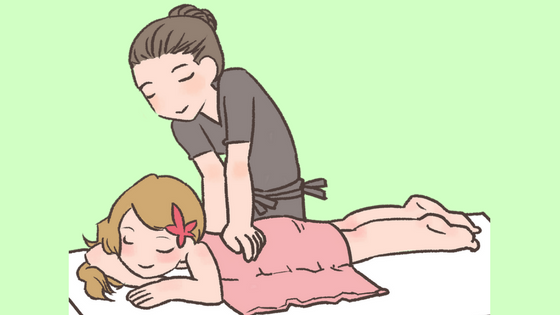
Effective for: Subacute (lasts from 4 to 12 weeks) and chronic (more than 12 weeks) back pain.
Overview: Back rub not only feels good but also one of the best ways to relieve back pain without relying on prescription medications.
The same ACP guidelines state that massage is good for “short-term pain relief” in patients who have been suffering from back pain for at least 4 weeks. The benefits are even better when massage is combined with other interventions like exercise.
In a 2016 case study published in the International Journal of Therapeutic Massage And Bodywork, a series of massage given to a 63-year-old former construction worker produced favorable results.
The subject is suffering from chronic back pain as a result of four different conditions: scoliosis, spinal stenosis, osteoarthritis, and spinal degenerative disease. After receiving 4 massages within a 20-day period, he reported significant improvements in his daily functioning.
Meanwhile, a similar study published in 2017 in the journal Pain Medicine involved more participants–104 people suffering from chronic back pain. However, the results are just as astounding: After receiving 10 sessions of massage for over 12 weeks, more than 50%– the majority of which are older adults–reported “clinically meaningful improvement” in their back pain.
Despite the strong evidence proving the positive effects of massage, practitioners have yet to conclude which type and duration of massage are the most effective for back pain.
How To Do It:
Before anything else, please understand that massage may not be for you. If you’re unsure, talk to your physician to learn whether or not massage is suitable to your condition. Here are the contraindications for massage therapy you should take note of.
Massage is usually given in a spa by a licensed therapist. Alternatively, you can watch a plethora of DIY massage on YouTube or simply buy high-tech devices like massage chairs, back massagers, and massage cushions which are designed to give a spa-like relaxation at the comfort of your own home.
There’s a host of massage styles to choose from, with your choice ultimately depending on your needs, preference, and health status.
Swedish massage involves long strokes while Shiatsu requires the application of deep finger pressure to restore “energy balance” in your body. You can also try sports massage if you’re an athlete or deep-tissue massage if you prefer something aggressive.
In this guide, we’ll focus on three massage techniques that are often overlooked but surprisingly effective. Best of all, you can do them on your own.
a. Reflexology.
Our hands and feet can be your map towards restoring health and balance in your body. Rooted in ancient Chinese medicine, reflexology is based on the belief that reflex points in our hands and feet are connected to vital organs of the body.
Applying pressure to these points can remove blockages to the flow of energy, thereby correcting health issues resulting from such blockages.
If you’re dealing with back pain, the key is to find the spinal reflexes and apply mild pressure on them.
Spinal reflexes run along the medial side of the foot as well as the side of the hand from the thumb all the way down to the upper portion of the wrist. You can apply finger pressure or “thumb walking” to the entire spine reflex whenever you experience lower back pain.
For more detailed explanations, you can read our comprehensive guides to foot reflexology and hand reflexology.
b. Trigger point massage.
In some cases, the pain is concentrated in one area that a traditional back massage just won’t cut it.
Trigger points are defined as contracture knots that feel tighter or denser than its surrounding tissues. These painful points form in a specific part of a muscle, as opposed to spasm which is a contraction involving the whole muscle.
Trigger points aren’t literally “knots.” They are simply tight and tender spots caused by the tension in the muscles. Unless the contracture is corrected, the trigger point will restrict blood flow to the area, resulting in accumulation of metabolic byproducts and deprivation of oxygen.
What makes trigger points unique is they also send pain to other areas of the body. This referred pain is often felt in the lower back, neck, head, and jaws.
For lower back pain, three main trigger points are often the culprits:
⊕Gluteus medius, located at the middle-top of your back (see video below).
⊕Deep spinal muscles, which run alongside the left of your spine.
⊕Quadratus lumborum, found just below your rib cage and is often referred to as “Joker of low back pain” because it’s an often overlooked source of low back pain.
Fortunately, you don’t have to go to a therapist to have a trigger point massage. Follow these steps to get the best results possible:
⊕For beginners, consider reading the two-volume “Myofascial Pain and Dysfunction: The Trigger Point Manual” by Janet Travell, MD, and David Simons, MD.
⊕Although you can press the trigger points using your thumbs, knuckles, or even a tennis ball, it is highly recommended to use self-massage tools instead. Products like Body Back Buddy are not only affordable but also help you massage hard-to-reach areas, protect your hands from overuse, and leverage your strength.
⊕Locate and massage the lower back pain trigger points one by one. Apply deep, stroking massage from one side of the point to the other, making sure you do it slowly and in one direction. Otherwise, the blood circulation to the contracted knots will be cut-off further, worsening the condition.
⊕Each trigger point should be massaged 3 to 6 times per day, with 10 to 12 slow strokes at a time.
⊕It’s normal to experience pain when pressing the trigger point. Aim for at least a level of 5 on a pain scale of 1 to 10. If the pain isn’t relieved, you may be massaging the wrong spot. If it persists and is also accompanied by other symptoms like bowel or bladder issues, contact your physician immediately to rule out more serious medical conditions.
c. Myofascial release.
Not all cases of lower back pain involve muscles alone. When you say myofascial pain, for instance, the discomfort is caused by tension in the muscle (myo) and tears in the connective tissue (fascia) covering it.
Fascia is like an oil that makes muscle movements and functions smoother. It’s similar to the thin, slimy layer on the chicken breast which you can peel off with ease. All muscles in the body have fascia, as do other essential structures like blood vessels, organs, and nerves.
When an injury occurs such as when you exercise too much, tears in the fascia start to form. If these tears go unhealed, different layers of fascia start to stick to each other to create an adhesion. This anomaly, combined with tight muscle knots, results in lower back pain that interferes with your daily activities.
To get rid of low back pain through myofascial release, follow these steps:
⊕Get a foam roller, preferably one with grids molded on its surface as well as a PVC pipe in its center for more stability and increased intensity of the massage.
⊕Roll your lower back over the foam roller until you find the trigger point. You know you’ve found the tension spot once you feel pain. Stop rolling and rest the tension spot on the foam roller for up to 2 minutes. It’s the pressure, not the rolling, that helps release the myofascial tension and adhesions.
⊕Focus only on the muscles and avoid joints and bony prominences. You can incorporate myofascial release to your warm-up exercises or you can do full 30 minutes of it during your rest day to allow your muscles to recover fully.
⊕Drink plenty of water following an intense round of myofascial release.
Exercise.
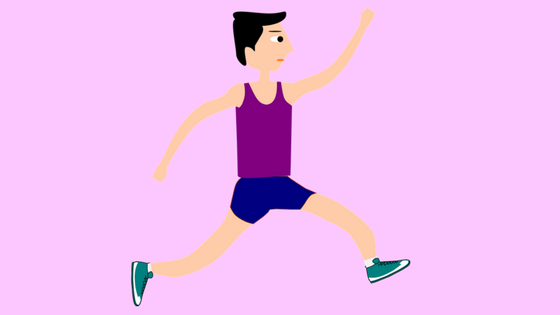
Effective for: Chronic back pain (lasts longer than 12 weeks).
Overview: Save for those caused by potentially life-threatening conditions, lower back pain is usually a sign that the person isn’t getting enough exercise.
Sadly, most people tend to be overwhelmed by pain, so much so that they would rather sit or rest in bed. As a result, the back muscles and joints become weaker, making it harder for the person to resume normal activities.
Dr. Jeffrey N. Katz of Harvard Medical School has a recommendation: keep moving.
It doesn’t mean you have to workout right away–doing so will only put your back in peril. Instead, Dr. Katz suggests you continue doing your normal activities except for those that require heavy lifting and anything that put unnecessary stress on your back.
Once serious medical conditions have been ruled out and the pain has subsided, you can then perform exercises that stretch and strengthen your back.
Scientific research is never short of studies proving the link between exercise and lesser recurrences of lower back pain. One of the most recent was published in JAMA Internal Medicine and spearheaded by researchers from the George Institute for Global Health at the University of Sydney in Australia.
After sifting through 6,000 back pain studies, the researchers picked only 23 that are the most reliable. Involving 30,000 participants, these chosen studies led them to a conclusion that exercise, combined with education, reduced the risk of an episode of low back pain within the following year by 45%.
As for the type of exercise to be performed, research shows it doesn’t matter as long as it’s done regularly and with clearance from your doctor.
The ACP guidelines also corroborate this finding. Their research shows that exercise led to improved pain relief and function among patients suffering from chronic low back pain. Between exercise and no exercise, it’s quite obvious which one will benefit your back in the long run.
How To Do It:
Not all exercises and sports activities are safe for those with lower back pain. To save you time, we recommend these three activities proven to relieve pain without putting your back at risk:
Stretching is a great way to relieve stiffness and soreness on your lower back. Do it regularly and your back muscles will grow more supple, flexible, stronger, and less prone to injuries.
Stretches presented in the video above have elements of yoga that can provide instant relief from lower back pain and prepare your body for more intense aerobic activities.
Some of my favorites are the “Cat and Camel” where you arch your lower back downward and upward to release tension; “Press Up,” which is similar to the upward facing dog position in yoga, only this time the hands and forearms are both used as anchors; and the “Leg Raise,” which requires you to lie in prone position and lift your legs for 15 seconds each.
b. Aerobic activities.
An ideal lower back exercise is one that strengthens the structures supporting the spine. These include the abdominal, back, and buttock muscles–all of which work together to help you achieve an upright posture.
But while almost all sports activities are good for the heart, some aren’t back-friendly.
As a rule of the thumb, choose activities that work on your target muscles without putting you at risk for back injuries. According to Harvard Health Publications, the best choices would be swimming, walking, and cycling.
Meanwhile, steer clear of sports like weight lifting, tennis, wrestling, running, and football. These intense activities involve lifting, extension, and impacts that expose your lower back to further pain and injury.
Developed in the 1970s by San Diego-based anatomical physiologist Peter Egoscue, this method is based on the principle that lower back pain is our body’s way of telling us that we’re physically off-balance.
The misalignment and uneven weight distribution in the body are what making us sick and will continue to do so unless we correct them.
The Egoscue method is a series of stretches and gentle exercises called “e-cises” designed to correct your posture, bring back the balance to your body, and thus provide long-term relief from lower back pain.
Mindfulness-based stress reduction (MBSR).
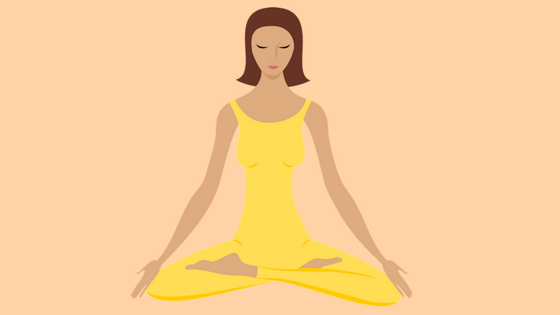
Effective for: Chronic back pain (lasts more than 12 weeks).
Overview: Believe it or not, lower back pain can also be a result of our negative thoughts and weak coping mechanisms.
Case in point are the numerous cases of low back pain wherein patients don’t suffer any physical abnormalities that might have caused the pain. There are also those with conditions like bulging discs that should be suffering from back pain but actually don’t. Indeed, for these unique cases, there must be something else at play.
Harvard’s Dr. Ronald D. Siegel, who has studied mindfulness meditation all his life, believes that “something else” is none other than our minds.
How much pain we experience depends on our coping mechanisms. If we are prone to anxiety and stress, the intensity of the pain is multiplied by twofold. This is because the pain causes an imbalance of brain chemicals, disrupting the areas controlling the emotions, attention, and anxiety.
Thankfully, a method called mindfulness-based stress reduction can be used to rehabilitate our thoughts, beliefs, and feelings. This technique isn’t all about escaping the pain; rather, it’s being aware of it. But rather than focusing on the negative ways by which we handle the pain, we dedicate our energy instead to our breathing as we observe our distressed thoughts come in and out of our system.
It is by being in the moment that we can finally realize how much of our thoughts contribute to the stress we experience.
In a 2016 study published in The Journal of the American Medical Association, 320 adults from different age groups received either a “usual care” or an eight-week class in mindfulness-based stress reduction. Those in the latter experienced reduced lower back pain even 1 year later when the study concluded.
Not surprisingly, the ACP guidelines have included mindfulness as one of their recommended therapies for chronic low back pain. The decision was based on one study which showed patients experienced reduced pain at 26 and 52 weeks and improved function at 26 weeks.
How To Do It:
Mindfulness-based stress reduction is offered as an eight-week course by many pain clinics in the US. There’s also a shortened version which runs for four weeks.
In a March 2016 study published in the journal Brain and Behavior, the researchers found out that those who learned mindfulness, even if it’s just a 4-week course, showed great improvements in their back pain and depressive symptoms.
Alternatively, you can learn MBSR on your own with the help of free online resources like the ones you can download at mindfulness-solution.com.
Dr. Ronald D. Siegel, an expert in this method, also co-authored a book entitled Back Sense: A Revolutionary Guide to Halting the Cycle of Chronic Back Pain, which basically teaches you how to harness mindfulness-based stress reduction to cope with back pain.
